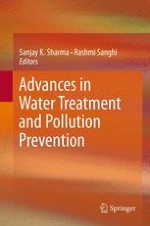2012 | OriginalPaper | Buchkapitel
7. Microwave-Assisted Organic Pollutants Degradation
verfasst von : Ackmez Mudhoo
Erschienen in: Advances in Water Treatment and Pollution Prevention
Verlag: Springer Netherlands
Aktivieren Sie unsere intelligente Suche, um passende Fachinhalte oder Patente zu finden.
Wählen Sie Textabschnitte aus um mit Künstlicher Intelligenz passenden Patente zu finden. powered by
Markieren Sie Textabschnitte, um KI-gestützt weitere passende Inhalte zu finden. powered by
